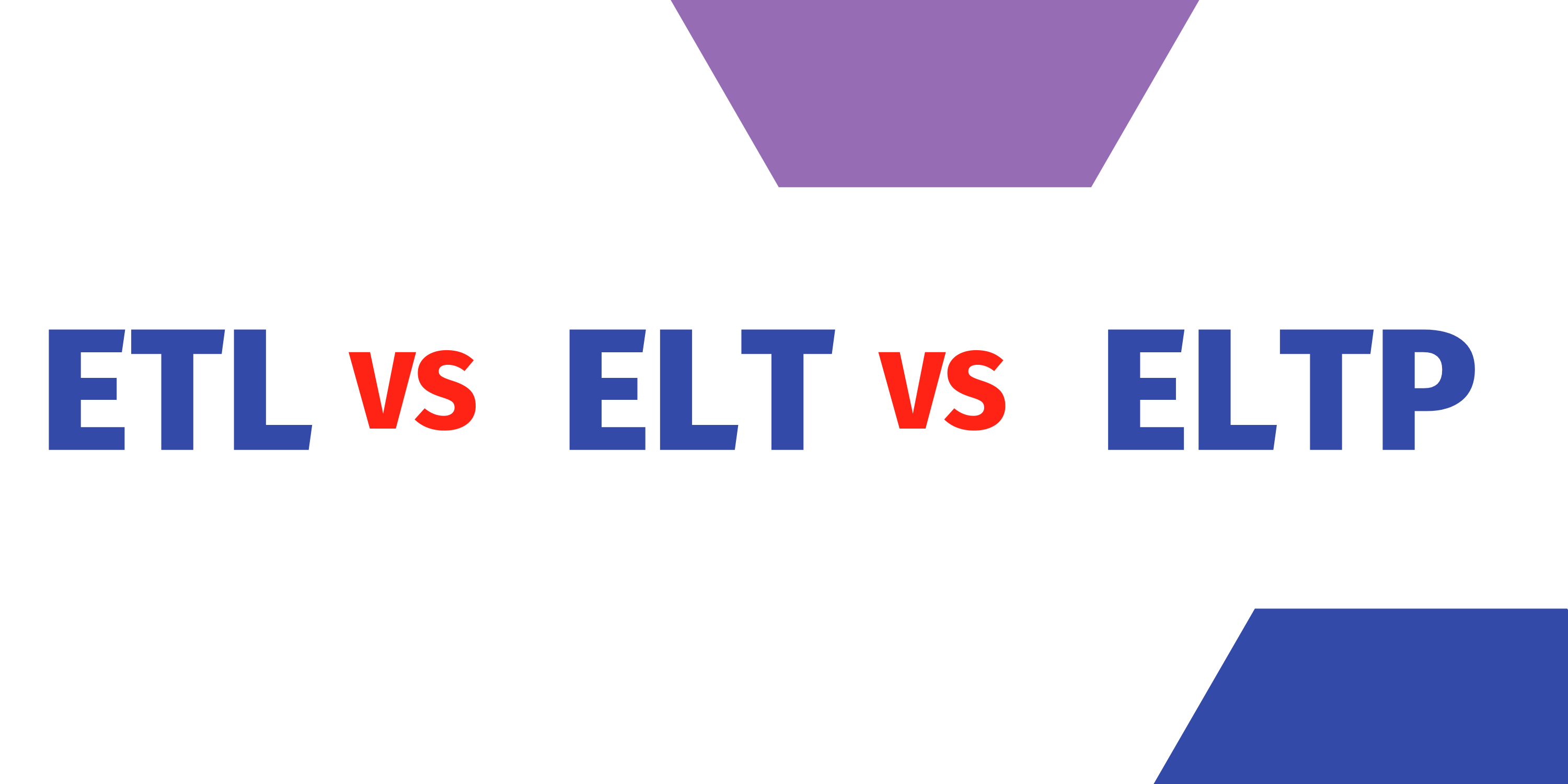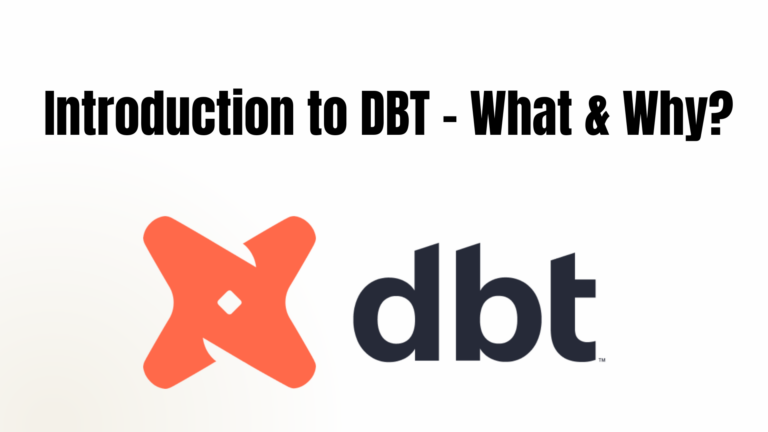The differences between ETL, ELT, and ELTP methodologies highlight the evolution of data integration strategies over the past few decades. These advancements have given rise to three primary methodologies: ETL (Extract, Transform, Load), ELT (Extract, Load, Transform), and the more recent ELTP (Extract, Load, Transform, Publish). Each approach offers distinct advantages and addresses different needs in the data processing pipeline. This blog aims to provide a comprehensive understanding of these methodologies, their benefits, and the contexts in which they are most effectively applied.
Table of Contents
Introduction to Data Integration
Data integration is crucial in today’s data-driven landscape, where businesses need to process and analyze vast amounts of data from various sources to make informed decisions. The evolution from ETL to ELT and now to ELTP reflects the changing requirements and technological advancements in data processing. Understanding these methodologies is essential for designing efficient and scalable data pipelines that meet modern business needs.
ETL (Extract, Transform, Load)
ETL is the traditional method of data integration that has been widely used since the 1970s. This approach involves extracting data from multiple sources, transforming it to fit the target system’s requirements, and then loading it into a data warehouse or database.
Process Breakdown:
- Extract: Data is collected from various sources such as databases, APIs, and flat files.
- Transform: The extracted data is cleaned, normalized, and transformed to meet the requirements of the target system.
- Load: The transformed data is loaded into the target database or data warehouse.
Advantages of ETL:
- Data Consistency: By transforming data before loading, ETL ensures that the data is clean and consistent, which is crucial for compliance with regulations such as GDPR and HIPAA (IBM – United States) (Snowflake Data Cloud).
- Mature Technology: ETL has been around for decades, resulting in a robust set of tools and a large pool of experienced professionals (Informatica).
- Speed in Analysis: Since data is transformed before loading, queries can be executed quickly and efficiently once the data is in the target system (Ascend.io).
Drawbacks of ETL:
- Complexity and Cost: Implementing ETL processes can be expensive and time-consuming, often requiring specialized skills and continuous maintenance (Improvado) (Zuar).
- Latency: Data is not available for analysis until after the transformation process is complete, which can delay access to real-time data (Informatica).
- Scalability Issues: ETL processes can struggle to handle large volumes of data efficiently, making it less suitable for big data environments (Learn R, Python & Data Science Online).
ELT (Extract, Load, Transform)
ELT is a newer approach that has gained popularity with the rise of cloud computing and big data technologies. In this method, data is extracted from source systems and loaded into a data warehouse or data lake before any transformation occurs. The transformation is then performed within the target system.
Process Breakdown:
- Extract: Data is gathered from various sources.
- Load: The raw data is loaded directly into a data warehouse or data lake.
- Transform: The data is transformed as needed within the target system.
Advantages of ELT:
- Scalability: ELT leverages the vast storage and processing power of modern cloud data warehouses, making it highly scalable (Learn R, Python & Data Science Online) (Improvado).
- Flexibility: ELT supports both structured and unstructured data, allowing for more diverse data integration (Snowflake Data Cloud).
- Speed of Loading: Raw data is available for analysis immediately after loading, allowing for quicker access compared to ETL (HubSpot Blog).
Drawbacks of ELT:
- Complex Transformations: Advanced tools and techniques are often required to manage transformations effectively within the data warehouse (IBM – United States).
- Compliance Risks: Raw data might not meet compliance standards until transformations are applied, posing a risk if sensitive data is involved (Informatica).
- Processing Overheads: Extensive use of cloud resources for transformations can lead to higher costs if not managed properly (Zuar).
ELTP (Extract, Load, Transform, Publish)
ELTP is an extension of the ELT methodology, addressing the need for delivering transformed data to end-users and applications efficiently. This approach includes an additional step—publishing the transformed data to downstream systems and users.
Process Breakdown:
- Extract: Data is collected from various sources.
- Load: The data is loaded into durable storage, such as a data warehouse or data lake.
- Transform: The data is transformed within the storage system.
- Publish: The transformed data is delivered to downstream users and business applications.
Advantages of ELTP:
- Comprehensive Data Flow: ELTP ensures that data is not only transformed but also effectively delivered to the necessary endpoints, facilitating real-time data usage (Ascend.io) (Zuar).
- Real-Time Availability: This approach enhances scenarios requiring immediate data access, making it ideal for modern, data-driven business environments (Learn R, Python & Data Science Online).
- User-Centric: Focuses on delivering actionable data to business applications, ensuring that end-users have access to the information they need when they need it (Informatica).
Drawbacks of ELTP:
- Complex Implementation: Adding the publishing step can increase the overall complexity of the data pipeline, requiring additional infrastructure and management (IBM – United States).
- Resource Intensive: Ensuring the efficient management of the entire process from extraction to publication can require significant resources (Improvado).
Choosing the Right Approach
Deciding between ETL, ELT, and ELTP depends on various factors, including data volume, processing needs, compliance requirements, and the necessity for real-time access. Each methodology has its strengths and is best suited to specific scenarios.
ETL is ideal for situations requiring high data integrity and compliance. This approach ensures that data is clean and consistent before it reaches the target system, making it suitable for industries with strict regulatory requirements. ETL is also advantageous when dealing with smaller datasets that need thorough transformation before analysis.
ELT is optimal for handling large datasets in cloud environments. This method takes advantage of the scalability and processing power of modern data warehouses, making it suitable for big data applications. ELT is also beneficial when the data format is diverse, and transformations need to be performed on-demand.
ELTP is best for modern data environments where data needs to be delivered quickly and efficiently to end-users and applications. This approach ensures that transformed data is readily available for business use, making it ideal for scenarios requiring real-time data access and actionable insights.
Practical Use Cases
ETL Use Cases:
- Data Warehousing: ETL is often used to integrate data from multiple sources into a data warehouse, ensuring that the data is consistent and ready for analysis (IBM – United States) (Snowflake Data Cloud).
- Compliance Reporting: Industries such as healthcare and finance use ETL to ensure that data complies with regulatory standards before it is loaded into target systems (Informatica).
- Legacy System Migration: ETL is beneficial for migrating data from legacy systems to new environments, transforming data to fit the new system’s requirements (Improvado).
ELT Use Cases:
- Big Data Analytics: ELT is well-suited for environments that require processing large volumes of data, such as meteorological systems and stock exchanges (IBM – United States) (Learn R, Python & Data Science Online).
- Cloud Data Integration: Organizations leveraging cloud data warehouses for their data storage and processing needs often use ELT to take advantage of the scalability and flexibility of these platforms (HubSpot Blog) (Zuar).
- Real-Time Data Processing: ELT is ideal for scenarios where data needs to be available for analysis as soon as it is collected, such as in e-commerce and digital marketing (Snowflake Data Cloud) (Ascend.io).
ELTP Use Cases:
- Business Intelligence: ELTP ensures that data is not only transformed but also published to business intelligence tools, providing real-time insights to decision-makers (Ascend.io) (Zuar).
- Data Sharing: Organizations that need to share data across various applications and users benefit from the publishing step in ELTP, ensuring that data is readily accessible and actionable (Learn R, Python & Data Science Online) (Informatica).
- Modern Data Applications: ELTP is suited for applications that require real-time data delivery and transformation, such as AI and machine learning models that need fresh data to function effectively (IBM – United States) (Improvado).
The Future of Data Integration
The evolution from ETL to ELT and now to ELTP reflects the ongoing advancements in technology and the increasing demands for real-time data access and processing. As data volumes continue to grow and business needs evolve, these methodologies will further adapt, incorporating new technologies such as artificial intelligence and machine learning to enhance data integration processes.
ETL will continue to be valuable for scenarios that require high data integrity and compliance. As regulations become stricter and data governance becomes more critical, the ability to transform data before loading will remain essential for many organizations.
ELT will see increased adoption as cloud technologies advance, offering even greater scalability and flexibility. The ability to load raw data into powerful cloud data warehouses and perform transformations on demand will be crucial for organizations dealing with large and diverse datasets.
ELTP will likely become the standard for real-time data processing and delivery. As businesses demand quicker access to actionable insights, the ability to publish transformed data to end-users and applications will be a key differentiator in the data integration landscape.
Conclusion
Understanding the differences between ETL, ELT, and ELTP is crucial for designing effective data integration strategies. Each methodology has its advantages and is best suited for different scenarios
Read also Apache Airflow Tutorial, What are Transactional Databases?




